#NatureZen: The Pawpaw and the Swallowtail
by Melissa McMasters, Conservancy Director of Communications
“Everything’s connected.” This phrase is never more true than when we’re examining ecosystems, and how every organism depends on another for its survival. Trees and flowers need insects to carry their pollen to other plants in order to reproduce, and the insects also need the pollen for food. Win-win.
In the case of butterflies, the adults love to encounter a flower full of nectar, but they’re also on the lookout for leaves, where they lay their eggs in anticipation that the caterpillars will need something green to eat. But did you know that specific butterflies require specific leaves for their caterpillars? That fact is the reason that the Old Forest is home to a unique and beautiful butterfly: the zebra swallowtail.
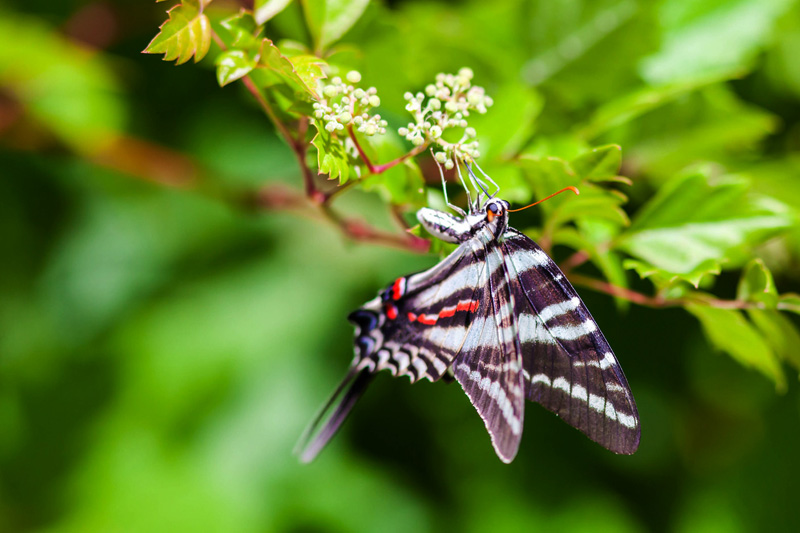
Zebra swallowtails, which are the only species of kite swallowtail that lives in temperate North America, lay their eggs on only one type of plant: the pawpaw tree. According to tree inventories the Conservancy has conducted over the past few years, there are more common pawpaw trees in the Old Forest than any other kind of tree. This gives zebra swallowtails plenty of plants to choose from in our forest. They lay eggs on young leaves, which have higher doses of chemicals that repel deer, rabbits, and other predators. They also only lay one egg on each leaf, because, oops–turns out those caterpillars can get a little cannibalistic if they get too close together!
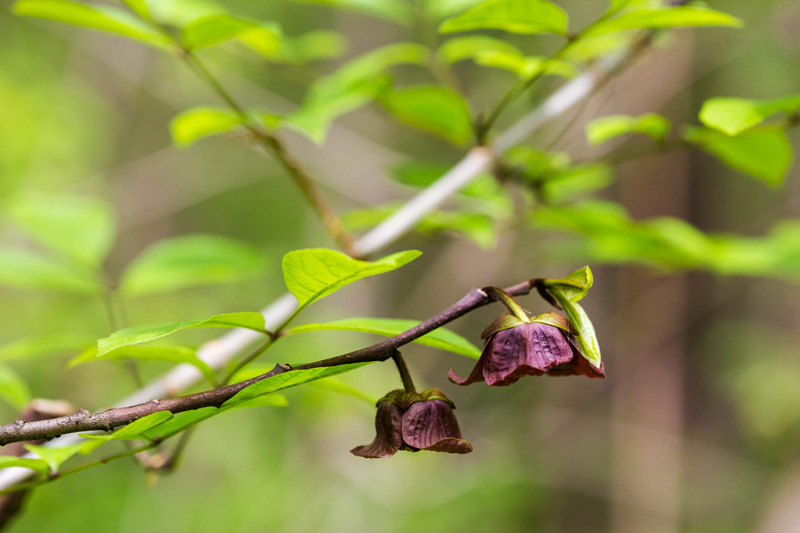
When zebra swallowtails become adult butterflies, they want nothing to do with the pawpaw. The tiny flowers have an unpleasant fragrance and are pollinated mostly by carrion flies and beetles, when they’re pollinated at all–most pawpaw patches these days seem to reproduce through the root systems, which send up suckers and create genetic clones that eventually replace the original trees. Because they are sparsely pollinated, the plants produce relatively few fruits, which are so large that our forest mammals aren’t great at redistributing the seeds.
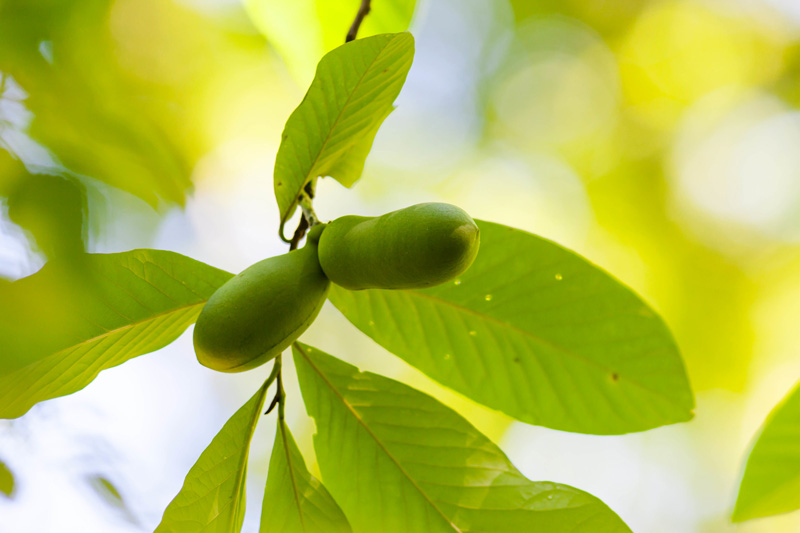
Not all butterflies are as particular as the zebra swallowtail when choosing host plants for their young. Eastern tiger swallowtails, for instance, will lay their eggs on ash, cherry, plum, sassafras, and birch trees.
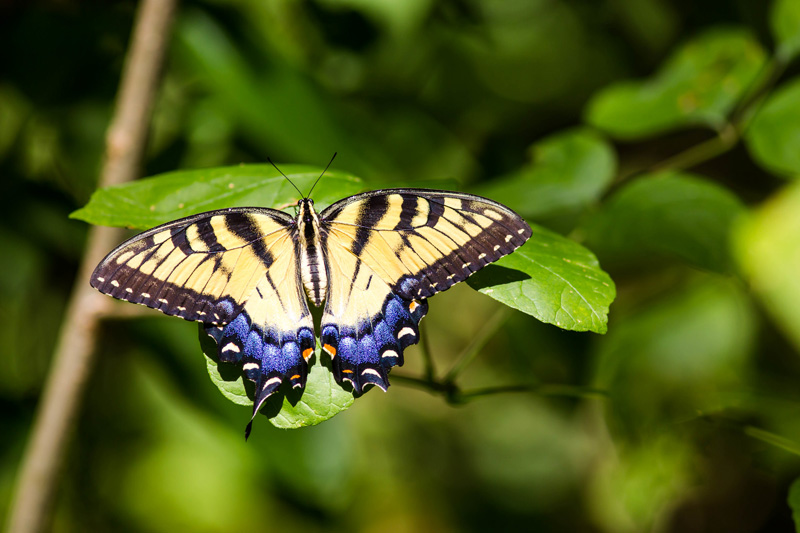
They’re also fond of the tulip poplar, which is of course Tennessee’s state tree and one of the signature towering trees of the Old Forest.
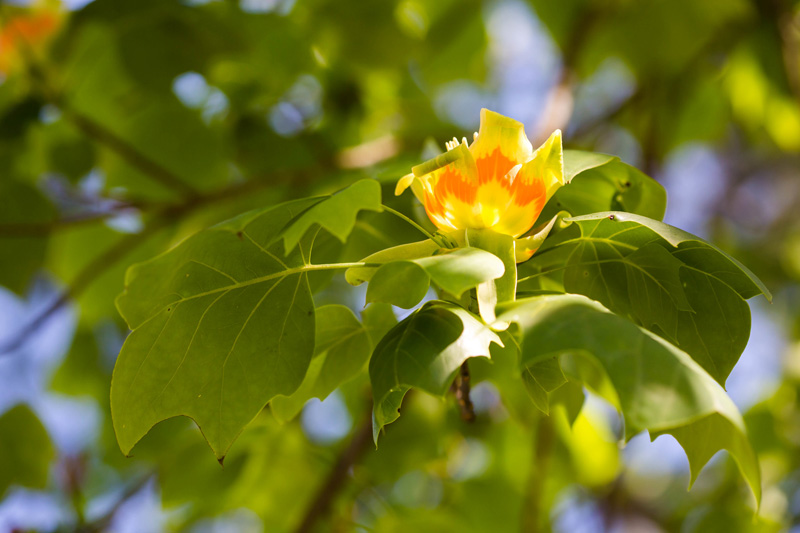
The question mark and the mourning cloak, two butterflies that overwinter in the forest and might surprise you on a warm February day, lay eggs on a variety of trees including elms and hackberries. (Can you tell from the tiny white markings how the question mark got its name? The mourning cloak has a pretty evocative name too!)
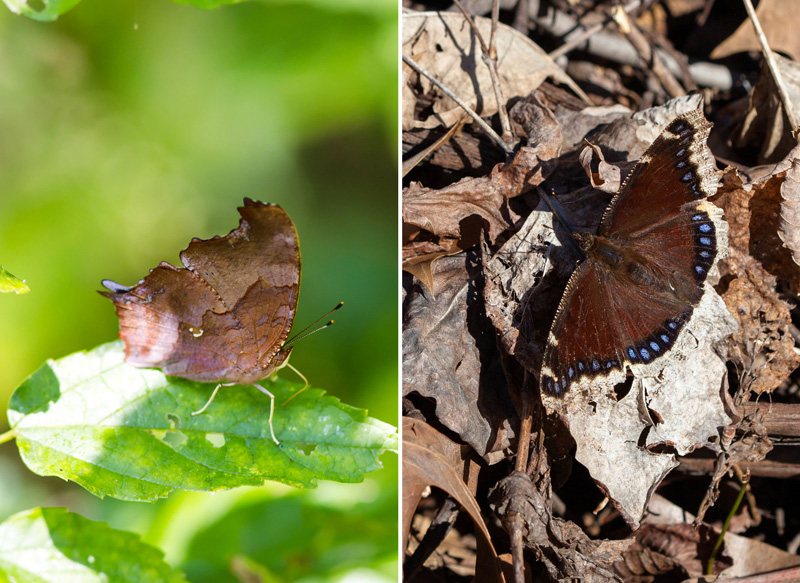
This American elm (seen just as it’s budding out in spring) is one of several varieties of elm present in the Old Forest, including slippery elm and winged elm.
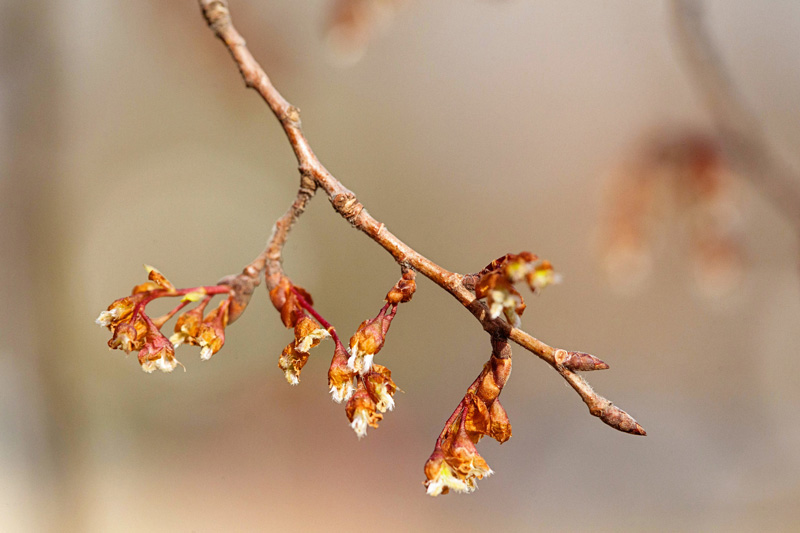
And one of our most common forest butterflies, the red-spotted purple, uses fruit trees, willow trees, and even a red oak species that has willow-like leaves and is named, appropriately, the willow oak. (In this photo, it’s drinking some salt from the concrete. Butterflies look for nutrients wherever they can get them, which is why on hot days, you may have a butterfly land on your arm to sip some sweat!)
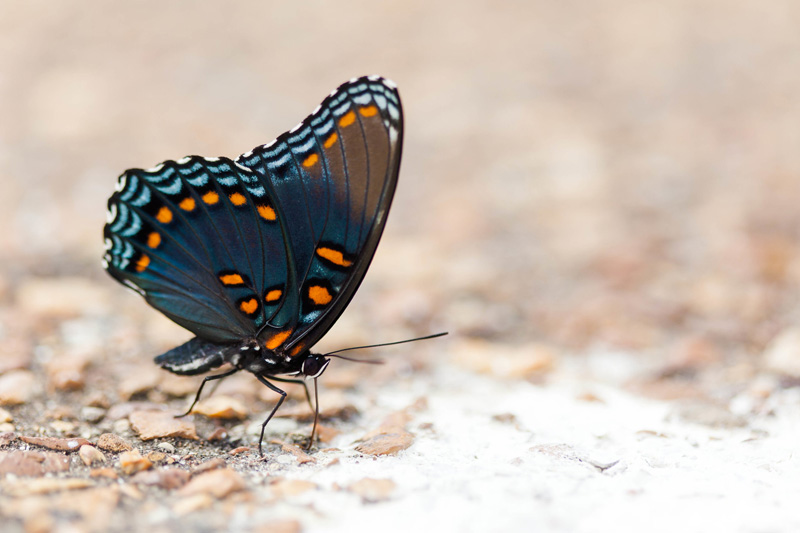
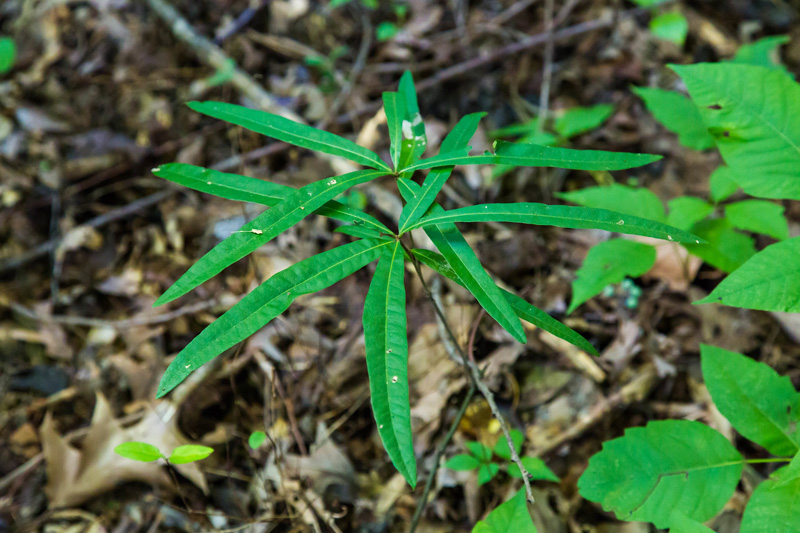
If you have a home garden, pay attention to the leaves of your plants and see if you can spot any tiny eggs or caterpillars using them as food and shelter. It’s just as important to plant flowers and trees for caterpillars as for adult butterflies, and as we’ve seen, those plants are not always the same! Here’s a guide to some common butterfly host plants you may want to consider.



